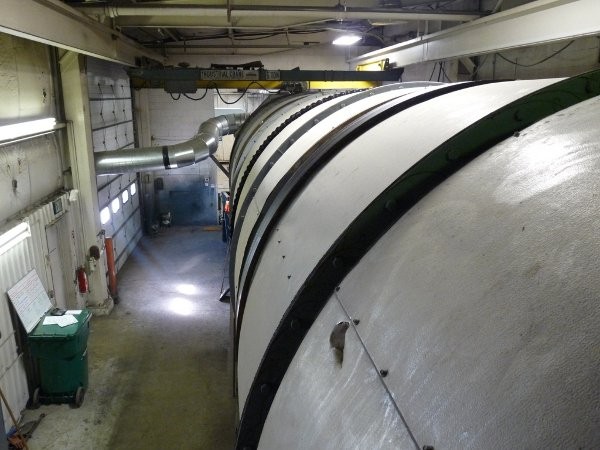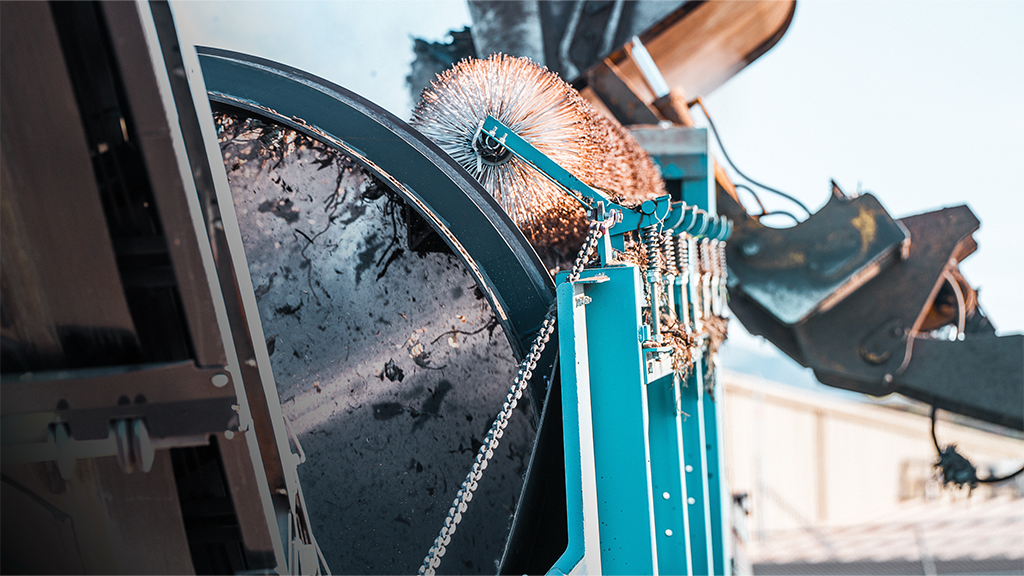
Alaska Green Waste Solutions was created as an offshoot from Alaska Waste – a refuse hauling company based in Anchorage. Alaska Waste’s customers included many grocery stores, which utilized dumpsters.
There were challenges with the typical waste collection process due to the high volume of moist produce waste being disposed of, compounded by the cold climate. Problems occurred when pre-consumer vegetable and fruit waste (thousands of pounds per day) were placed in the dumpster, and the juices from the produce would run out of the dumpster and the collection trucks. (When you consider that the moisture content of fruit and vegetables is 75 to 95 percent, there was a tremendous amount of liquid running out.)
Because of the cold temperatures in the winter months in Anchorage, the liquids would ice up, causing hazardous conditions for the people who had to access the dumpsters. Plus, the liquids running out of the collection trucks as they made their way through the streets of Anchorage were causing icy slicks, which did not please local regulatory agencies. So, something needed to be done to ensure the safety of employees, customers and citizens.
Alaska Waste owners had been wanting to divert their 450 to 500 tons of organic materials from the landfill for some time, and had looked at the possibility of windrow and static pile composting. However, the company did not have the space for these methods and the throughput would be too slow. Then Alaska Waste investigated in-vessel composting methods and came upon the rotating drum BioReactor technology by XACT Systems.
XACT’ BioReactor has a tiny footprint and tremendous throughput capacity. It was a good fit for Alaska Waste’s needs, so they purchased a 10-foot diameter by 30-foot long vessel which was installed in 2009. At the same time, Alaska Waste provided all of its grocery store customers with 64-gallon tipper carts to dump their vegetable and fruit waste (at a small rental rate).
The grocery stores accepted the new program readily as it made for a safer and cleaner situation for their staff, and reduced their waste haulage fees to landfill. In addition, they were able to raise their “Green” status in the community.
Meanwhile, Jeff Jessen, Alaska Waste’s renewable resources program administrator, had to learn to make compost with the available feedstocks. He says, “there is a little bit of an art to it, but once you get it dialed in, it runs on cruise control!”
Jessen says in order to get the correct carbon-to-nitrogen ratio for successful composting, more carbon was needed to blend with the food waste. Wood chips were readily available and proved to be an ideal carbon source. When blended with the food waste, the chips provided better porosity for the mixture, which allowed for better aeration. At the same time, there were many horse farms in the Anchorage area experiencing the burdensome and expensive problem of disposing of horse manure. Alaska Waste realized that manure would be a good addition to the compost recipe, so they put roll-off containers at the horse stables and arranged for weekly pick ups.
Through some trial and error, the ideal blend of organic materials proved to be two parts food waste, two parts wood chips and one part horse manure. Plus, a microorganism accelerant is added. Loading occurs each day, and the mix is tested for ph, moisture and temperature. Data is collected and recorded at the time of output, and all data is recorded in a daily log book.
The XACT composting system is housed in a building, which already existed on site and is comprised of the BioReactor, four conveyors, and a mixer. Processing begins with the waste produce being loaded into a four-auger mixer truck and allowed to sit overnight, which allows the excess liquid to drain off. In the morning, the mixer is started and the manure and wood chips are added. The mixer runs for about 20 minutes, and the contents are discharged onto a conveyor that takes the material to the in-feed of the BioReactor.
The waste material is retained in the drum for seven days and it rotates only a couple hours per day. The operating temperatures vary between 115 degrees F and 145 degrees F. They aim for 130 degrees and the micro-organism additive boosts the processing temperature to reach this target. Plus, the system’s variable speed exhaust fan draws moisture off the unit and is vented outside via duct work.
According to Alaska Green Waste Solutions, upon discharge there are no identifiable particles, and the compost is light and fluffy organic matter with consistent high quality. Plus, the total volume of the material as it passes through vessel is reduced by about 20 percent. Additionally, there is only one operator who works a total of three to four hours per day with the entire composting system.
There is also minimal maintenance, and energy requirements are low because the 10-foot by 30-foot drum is being driven by only a five-hp motor. As an added bonus, the heat off the BioReactor helps heat the compost building.
“The composting system runs so well and it couldn’t be easier to operate,” says Jessen. Alaska Waste sells their compost for $50.00 a cubic yard to Green Earth Landworks, a local nursery owned by husband and wife team, Christina & Jeremiah Eneix. There they cure it in static piles for a couple of weeks.
Because of the severe weather conditions, the Eneix’ inoculate the pile with a microbial package to enhance the final maturation of the compost. The piles are then blended with top soil for bulk sales at the nursery, and used for landscaping at housing projects, erosion control for large projects, and as a medium for compost socks used by the local Department of Transportation, who requires the use of certified compost.
“They cannot get enough of our compost,” Jessen reports.


